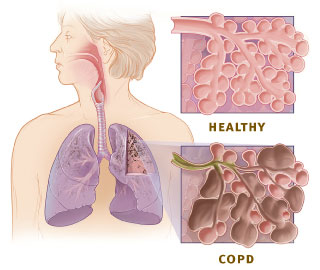Normal hemoglobin is termed as HbA (A for Adult). But many abnormalities do occur in haemoglobin synthesis. One of those is HbS (S for Sickle), which derives the name from sickle as the RBC becomes sickle shaped in an oxygen deprived condition.
Sickle cell hemoglobin (HbS) results from replacement of amino acid glumatic acid by valine at the position 6 in the B chain of the the protein present in HbS. It is a genetic disorder; mostly commonly seen in a closed population and consanguineous marriage spreads it.
RBC is a discoid shaped and biconcave microscopic cell in blood. This shape facilitates it to deform while negotiating through the narrow road of the smallest calibered blood vessels in the body and revert back to original shape. In other words those are very elastic. This quality lacks in a RBC containing HbS.
HbS is found in conjunction with other abnormal type of Hb such as HbF (F for Faetal) in some patients; the type that is seen in Thalassaemia. HbF is normal content in faetal RBC, which helps the faetal cells to get oxygen in mother's womb, in a relatively oxygen scarce environment.
After delivery of oxygen to the cells, there develops an oxygen deprived state inside the smallest calibered blood vessels that permanently deforms the RBC with HbS to sickle shape; and damage to their cell membrane make those rigid, so hard to pass through those blood vessels. As a result of which those stick together to block the blood vessels and flow of blood; which results in more oxygen deprived environment to form more sickles; and the cascading effect.
The block deprives the tissue of oxygen that results in the death of an area supplied by a particular blood vessel in any organ of body. Commonly affected organs are spleen, bone marrow, lungs, kidneys and liver etc. This causes various symptoms such as pain arising from the organ, blood in urine, anaemia; and secondary infection of bone and lungs called sickle cell crisis those can be aplastic crisis, sequestration crisis, haemolytic crisis and painful crisis etc..
This disease can be screened by sickling test in a oxygen deprived environment and conformed by electrophoresis of haemoglobin.
Treatment of this condition is not very satisfactory. Folate deficiency precipitates this condition as well as acidosis. So folate supplementation and avoiding oxygen deprived situation are two most important precautions in preventing flare up of symptoms.
Prevention of infection by different vaccinations against infectious diseases like pneumococcal pneumonia and prophylaxis for malaria are mainstay of present treatment modalities.
Recently,FDA has approved hydroxyurea , a chemotherapeutic agent against certain cancers for treatment of sickle cell disease. After administration of the agent, after certain period faetal haemoglobin (HbF) appears in the RBCs. As HbF has the quality of working best in an oxygen deprived environment that results in lessening the flare up episodes.
Hydroxyurea is the first drug to reduce the incidence of a wide range of symptoms in extremely young sickle cell patients regardless of disease severity. The drug is inexpensive and easy to administer. The drug has been used for more than 15 years as a treatment for sickle cell disease with no evidence of serious side effects.
The most common side effect reported in The Baby HUG trial was a mild-to-moderate drop in the white blood cells known as neutrophils, which occurred more often in children receiving hydroxyurea.
Low neutrophil counts can be associated with an increased risk of infection, but there was no evidence of this in the Baby HUG trial.
Production of more fetal haemoblobin counters the effect of HbS, thereby easing the living condition of these patients.
...
Click here to Subscribe news feed from "Clinicianonnet; so that you do not miss out anything that can be valuable to you !!
...






